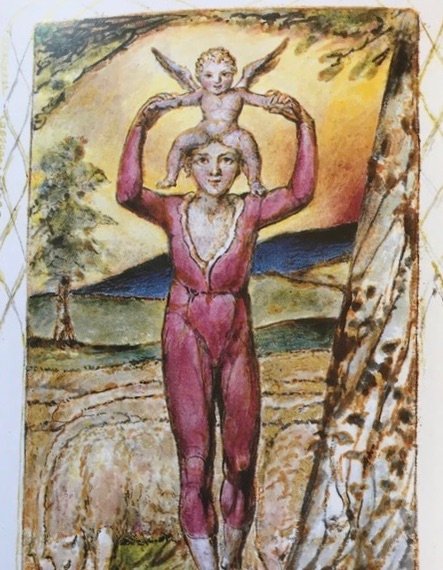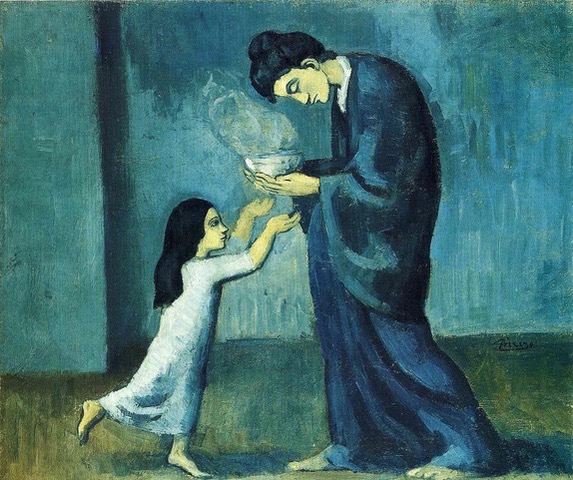"El cuento de hadas es la piedra de toque de la poesía... todo lo poético debe parecerse a un cuento de hadas. El poeta adora el azar".
- Novalis
"El cuento es más poderoso que la filosofía".
- Bruce Donehower, después de Novalis
Este vídeo de una conferencia de 20 minutos pertenece a una reunión de la Sección de Artes Literarias y Humanidades celebrada el 20 de noviembre de 2020. Al final de la entrada hay vídeos en inglés y alemán del cuento "Jacinto y capullo de rosa" de Novalis.
Novalis apreciaba mucho los cuentos de hadas. Mucho de lo que Novalis dice sobre la importancia espiritual de los cuentos de hadas encuentra eco en Rudolf Steiner cien años o más después de la muerte de Novalis. Esto concuerda totalmente con la extrema importancia que Rudolf Steiner concedió a Novalis, por ejemplo en el Último discurso.
Una de las afirmaciones más llamativas de Rudolf Steiner sobre el cuento de hadas es que "los cuentos de hadas pueden ayudar a contrarrestar enfermedades". Encontramos esta afirmación en el libro El mundo de los cuentos de hadasque aparece en la sección Libros de este sitio web.
Versión española:
Jacinto y capullo de rosa por Novalis
Versión alemana:
Hyazinth und Rosenblütchen de Novalis
"En un auténtico cuento de hadas, todo debe ser milagroso, misterioso e interrelacionado; todo debe estar vivo, cada uno a su manera. Toda la Naturaleza debe mezclarse maravillosamente con todo el mundo del Espíritu. En el cuento de hadas, los vínculos entre la anarquía, la anarquía, la libertad, el estado natural de la Naturaleza se hacen sentir en el mundo. . . El mundo del cuento de hadas es un mundo que se opone en todo a un mundo de verdad racional, y precisamente por eso es tan completamente análogo a un mundo de verdad racional, como el Caos es análogo a la Creación acabada."
- Novalis

"¡Pobre niña, que aún no ha amado!"
El cuadro de arriba es de William Blake. Contempladlo por un momento. (Blake y Novalis tienen mucho en común: fueron contemporáneos.) Contempla esta imagen e imagina que llevas sobre tus hombros a un niño como éste. ¿Está contento? ¿Triste? ¿Asustado? ¿Preocupado? ¿Enfadado? ¿Enfermo? ¿Está teniendo un ataque o tiene miedo del mundo?
Siempre me ha fascinado un comentario hecho por Novalis en la que Novalis decía que Goethe Cuento de hadas [La serpiente verde y el hermoso lirio] es "Ópera narrada." No ópera en una forma musical total, sino ópera narrada, dice Novalis. Ópera hablada. Normalmente, cuando cuento a mis amigos músicos que estoy haciendo vídeos de cuentos de hadas con artistas de la palabra en Fair Oaks -pequeñas "óperas narradas"- sonríen y dicen: "¡Qué bien! Se las daré a mis nietos". Pero estas pequeñas óperas narradas son para adultos. Como señalaron Novalis y Rudolf Steiner, ¡todo adulto necesita oír un verdadero cuento de hadas de la manera adecuada! Todo adulto lleva un niño dentro, como señaló Steiner, un niño que necesita oír el verdadero cuento de hadas, repetidamente. Pero tal vez el adulto no deja que el niño escuche esos cuentos. ¡Qué triste! ¡Qué triste! El adulto preferiría explicar los profundos significados ocultos en el cuento y decir cosas sabias o enseñar lecciones, pero el niño sólo quiere disfrutar de una ópera narrada.
"Göthes Märchen ist eine erzählte Oper."
- Novalis
"Hay una gran diferencia entre haber crecido o no de niño con los cuentos de hadas. La naturaleza conmovedora de los cuentos de hadas sólo se hace evidente más tarde. Si no se han dado cuentos, esto se manifiesta en años posteriores en el cansancio de la vida, en el aburrimiento. De hecho, incluso se manifiesta físicamente: los cuentos de hadas pueden ayudar a contrarrestar enfermedades. Lo que se absorbe poco a poco a través de los cuentos de hadas emerge posteriormente como alegría de vivir, en el sentido de la vida - sale a la luz en la capacidad de hacer frente a la vida, incluso en la vejez. Los niños deben experimentar el poder inherente a los cuentos de hadas mientras son jóvenes, cuando aún pueden hacerlo. Quien no es capaz de vivir con ideas que no tienen realidad para el plano físico, "muere" para el mundo espiritual".
- Rudolf Steiner

